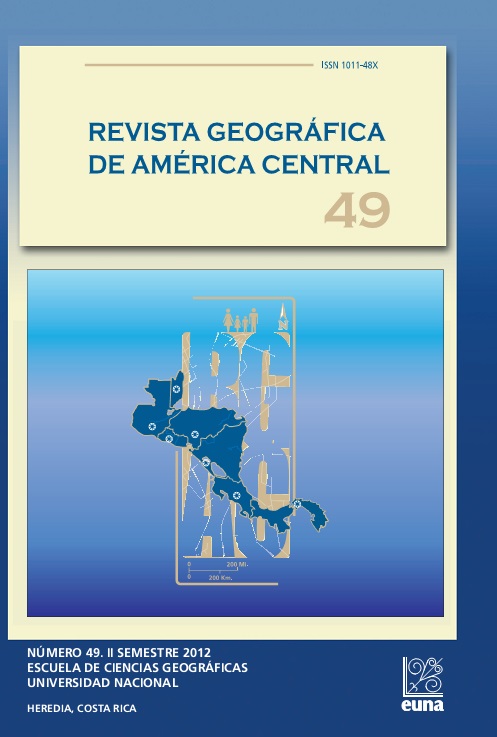STATE OF DEGRADATION IN LOCATED MALLINES IN THE CENTER WEST OF THE COUNTY DE NEUQUÉN (ARGENTINA)
Keywords:
Degradation, vegetation, “mallín”, livestock use, anthropogenic intervention, handlingAbstract
In Patagonia there are wetland ecosystems that have called “mallines” and its vegetation is favorable for livestock use. Management performed over time, mainly due to overstocking has caused in many different states of degradation mallines. The objective in this study is to analyze the status of two mallines located in the Central West of the Province of Neuquén. The results showed in the case of private mallin proper management of livestock which is manifested in supplemental irrigation and stocking acceptable, allowed keeping it in good condition over time and even enhancing areas suitable for livestock. In the second mallin “Laguna Blanca” shows the progressive deterioration of vegetation classes that appear, showing a succession of species with hydrophilic to xerophilic and mesophilic or halophilic and loss of organic soil. This shows effects of disturbance in some cases irreversible.
References
Bendini, M., Tsakoumagkos, P. y Nogues, C. (2005): “Los crianceros
trashumantes en Neuquén”. En: Mónica Bendini y Carlos Alemany
(Compiladores) Crianceros y chacareros en la Patagonia. Cuaderno
GESA 5 – INTA – NCRCRD. Editorial La Colmena, Buenos Aires. 23-40.
Ciari, G. (2009). Funcionamiento hidrológico de los mallines y sus cuencas asociadas. Carpeta Técnica, Medio Ambiente Nº 13, EEA INTA
Esquel, Chubut.
Campo, A., Peña, O., Gandullo, R., y de la Cal, R. (2011). Análisis de la
vegetación de un humedal “mallín” localizado en una zona semiárida
de la Provincia de Neuquén (Argentina). Papeles de Geografía. Vol. No 53. pp. 35-48. España.
Del Valle, H. (1993). Mallines de ambiente árido. Pradera salina y estepograminosa en el NW del Chuvut. En: Paruelo, J. (1993). Secuencias del deterioro en distintos ambientes Patagónicos. Su caracterización mediante el modelo de estados y transiciones. Chubut: INTA-GTZ. 110 pp. (85-90)
Fiorio, D. (1997). Manejo del agua en mallines. Presencia. XI. 41. Bs. As. pp de 19 a 23.
Gaitán, J.; López, C., Ayesa, J.; Siffredi, G. y, Umaña, F., (2009). Estudio de la estructura y funcionamiento de mallines a distintas escalas como base para su manejo sustentable y recuperación en Patagonia Norte. Bariloche: INTA.
Gandullo, R. y Schimd, P. (2001). Análisis ecológico de mallines del
parque provincial Copahue, Neuquén, Argentina. Agro sur, (29), (2), 83-99.
Gandullo, R., Schmid, P. y Peña, O. (2010). Dinámica de la Vegetación
de los humedales del Parque Nacional Laguna Blanca (Neuquén Argentina). Propuesta de un modelo de Estados y Transiciones. Manuscrito Inédito.
Leanza, H. (1985). Hoja 36b Cerro Chachil. Manuscrito Inédito. Servicio Geológico Nacional Argentino. Inédito.
Peña, O., Ostertag, G., Gantullo, R. y Campo, A. (2009). Comportamiento de la vegetación de un humedal (mallin) entre períodos húmedos y secos mediante análisis hidrológico y espectral”. Investigaciones geográficas Nº 45, pp 230- 249.
Downloads
How to Cite
Issue
Section
License
Proposed policy for journals offering Open Access
Authors publishing their works in the Journal acknowledge and agree to the following terms:
a) Authors retain the copyrights to their works and guarantee the Journal the right to be the first to publish their works, under the Creative Commons License Attribution-NonCommercial-ShareAlike 4.0 International, CC BY-NC-SA 4.0 International (https://creativecommons.org/licenses/by-nc-sa/4.0/deed.es), which allows others to share works upon complying with the acknowledgment of authorship and mention of the Journal as the original publisher of the work.
b) Authors are permitted to separately establish additional agreements for the non-exclusive distribution of the official edition of the work published in the Journal (for example, authors may desire to place the work in an institutional repository or incorporate it into a book that is to published elsewhere) so long they acknowledgment to recognize the Journal as the original publisher. The aforementioned additional agreements must respect the terms of the non-profit character and sharing philosophy of the original license (CC BY-NC-SA 4.0 International, https://creativecommons.org/licenses/by-nc-sa/4.0/deed.es).
c) Authors are encouraged to archive the post-print or editor/PDF version in Open Access repositories.






 REVGEO is licensed under https://creativecommons.org/licenses/by-nc-sa/4.0/deed.es
REVGEO is licensed under https://creativecommons.org/licenses/by-nc-sa/4.0/deed.es
.svg_4.png)

_(1).png)
_(1)_(1)_(1)_1.png)
(2)(1)(1)(1).png)
